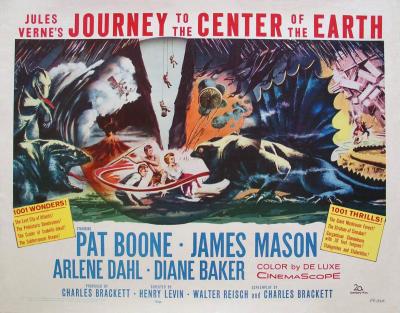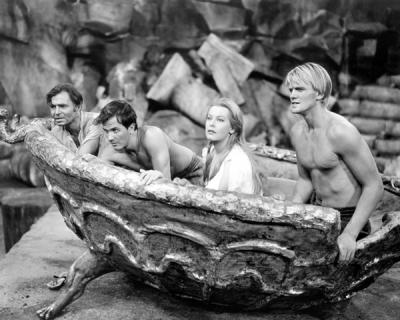By V. HANSMANN
“Push it ahead of you.”
With my fingertips, I shove my hardhat in front of me, while I thrust my body forward with my toes. A hundred yards of solid planet hang above me. Though dank anxiety brews in my core, my extremities are working flawlessly, independent of my consciousness. Be still, monkey mind. Now would be a supremely impractical time to have an out-of-body experience.
“Keep moving,” the voice behind me cautions.
We’re crawling through a sort of horizontal crevasse that slips into the void on either side. Follow the light. Just follow the light.
“And keep your head down.”
The roof of the tunnel scrapes my tailbone and more than once I smack my head.
I’d made a reservation for the 11am Wild Cave tour at Mammoth Cave National Park. I had a week to drive back to New York City from New Orleans where I had stage-managed a play for a friend. It was a lark. The three-month leave of absence from my Wall Street job was an artistic experiment and a respite from the rote of everything. Though a life in the theater was not for me, the city of New Orleans had affirmed the fundamental liveliness of life as it defied regret’s sensual adhesion. Now I headed home, to the old familiar.
I followed the Mississippi River north, up the Natchez Trace and Highway 61 to Memphis, then turned east. I tried to distract myself from the business ahead in New York by stopping at Civil War battlegrounds, National Parks, and musical epicenters (most especially, Graceland). I hoped this Wild Cave tour might superimpose a grownup subterranean experience on a claustrophobic nightmare from childhood. Therapeutic spelunking.
We’re a group of eight. Our leader is an earnest, compact Ranger who advises us that we will cover five miles in six hours, a lot of it four hundred feet below the surface. The pace, thus, will be brisk. There will be tight squeezes, darkness, and wet. Here’s your hardhat and here’s your headlamp; they attach like so. And this thing is your fanny pack. It has room for a water bottle and these two energy bars; use both sparingly. Fasten it so it hangs to one side because you’ll be crawling on your belly and anything on your back will catch on the rocks above. Very little wiggle room. An hour or so into the trip, there’ll be an opportunity for the exhausted or the upset to peel off and take the elevator topside.
Brisk, my ass; right from the get-go we’re trotting. After maybe half an hour of striding the well-lit paths of the walking tours and bounding up and down stairs two steps at a time, we veer suddenly into blackness, wedging ourselves sideways between two rock surfaces canted at a forty-five degree angle. Here, the wild cave begins. We hurtle through passages filled with a tumult of boulders. There is no depth of field. The ricocheting beams of the headlamps create a cascade of planes that spin and lurch and fade, like running through a Braque painting.
I look straight ahead, registering only the scraping of feet and chuffing of breath. I am pushing myself harder than I ever have. The corridor we’re traversing with such determination has a broken floor and no ceiling. Looking up reveals absolute emptiness. Our headlamps cast an immaterial dazzle on the rock walls as we dash through. Without noticing, a roof coalesces above us, and soon the tallest in the group is stooping; then we all are. The Ranger advises us to try to duck-walk rather than crouch, which works for twenty yards or so. I reach out with both hands and drop onto all fours. My hat grazes the top of the passage. Now we crawl commando-style. Overhead keeps descending. We take off our hardhats and push them ahead. Stuck. No, not stuck. Foreboding plus exertion equals momentum. My resolve crystallizes. I will do this.
Every once in a while the Ranger stops so we can catch our breath and sip some water. Never do we rest for long. No one has much of anything to say, certainly no questions or small talk. Off to one side, a father, mother, and son huddle to discuss something grave. Then we plunge into another mess of subterranean challenges.
Suddenly, we catch a whiff of something astonishing, like vegetable soup. The scent emanates from the Snowball Room, the cave’s cafeteria, the juncture where most tours intersect. Hyper-awareness can’t override basic sensory receptors, so this aromatic non sequitur rattles my concentration. The mother whispers to the Ranger and he escorts her to the elevator. She looks back at her family with relief and longing. When the Ranger returns, he informs us sadly that because our pace has been so erratic, there’s no time to stop here even for the quickest meal.
Damn, the Ranger is cute. Broad shoulders, nice ass, and a shock of sandy hair. He has a soft baritone and a drawl that gives his vowels plenty of time to breathe. Later, when we pause to gnaw on our snacks, he delivers his spiel; all about mileage and millennia, cave systems and catastrophes. The world’s largest cave by far, Mammoth Cave is a three hundred mile tangle of limestone tubes and fissures sprawling beneath the Kentucky countryside. What’s unexplored is incalculably vast. Occasionally now, I catch his eye.
One Saturday afternoon, my mom dropped me and my fifth grade pals off at the Warner Theater in downtown Ridgewood, NJ. Journey to the Center of the Earthwas the feature, the one with James Mason, Arlene Dahl, and Pat Boone. At nine, I was kind of a wuss. Action and suspense on the big screen made me nervous. I preferred romantic comedies and musicals. In any event, an afternoon at the movies presented a chance to feign bravado until the lights went down.

James Mason played a Scottish geology professor. One fine Edinburgh morning, he came into possession of a box containing a mysterious rock that confirmed his theory that the earth had a hollow interior. He assembled the requisite motley band, Arlene, the feisty widow, and Pat, the male ingénue, to undertake an underground quest to prove it. Once again, the inspirational power of mumbo jumbo sends an ill-prepared group on a wild goose chase. The band descended through a dormant volcano in Iceland, led by a strapping, eventually shirtless, blond fellow whose main concern was the well-being of his duck, Gertrude, who went along for the ride, apparently. I was transfixed. This man, his odd attachment to his pet, and the heavy blanket of Technicolor claustrophobia had me pinned to the seat.

One unforgettable scrape found the group in a glittering, crystal chamber. Their gas headlamps lit up the place like Tiffany’s at noon. Someone plucked at a jewel. It broke off and a trickle of water flowed from the spot. It became a spray, then a water cannon. In minutes, the room filled. The group paddled or grappled to the few remaining air pockets as their provisions floated out of reach or sank. A tug on a loose stalactite revealed an opening. There was clambering. A hairbreadth escape. I could let go of the armrests and exhale.
In addition to the many geological pickles the travelers got themselves into, they were menaced by a petty, sociopathic academic who wanted all the glory for himself. After much tribulation, they discovered the ruins of sunken Atlantis, inadvertently rousing some hibernating dinosaurs, which rampaged so thoroughly that they provoked a volcanic eruption. James, Arlene, Pat, the Nordic God and Gertrude the Duck (who may have expired by this point: memory is murky) sought safety in a huge stone basin that bobbed upon a smoking lava flow. Ultimately, a stupendous, tectonic paroxysm sent them shooting up a vent and out the mouth of Mount Etna in Sicily. The final shot of the movie was a wave’s-eye view of everyone sputtering in the Mediterranean. I felt just as damp and breathless, but completely spent. Dark tunnels, aroused beasts, shirtless blonds – these things can kill you.
Many a subsequent night I would lay my head on my pillow and drift off, only to get stuck somewhere on the way to the center of the earth – gasping as the air pocket shrank, sidestepping along a sliver of ledge, back to the wall, or sucked into the maelstrom at the planet’s gravitational core. I’d wake up tangled in my sweaty pajamas. After three or four years, these panics ebbed, ceasing to be a metaphor for what becomes explicit in puberty, when my dreams became hormonally wet. It turned out a cave was just a cave and a nightmare was just a nightmare, but a movie you see when you’re nine can haunt you for a long, long time.
Leading up to the Wild Cave Tour, my feelings grew increasingly kaleidoscopic; chips of anxiety and yearning shifted and overlapped, making perfect sense every time I held the thing up to the light. Fear and desire are fractal; they justify themselves infinitely. Dispatching those grade school nightmares once and for all may have provided the rationale for reserving a spot on the tour, but doing so might easily over-stimulate a host of hibernating dinosaurs. The present day equivalent of Icelanders without shirts, for example. And what about my innate chickenheartedness, that physical timidity that kept me off rollercoasters, dance floors, and skis? I could continue to err on the side of caution, to live in my head, on the surface, or I could attach the headlamp to my hat and go into the hole.
Self-restraint always gummed up my personal life, too. When in doubt: equivocate or postpone. For example, I maintained that nobody ever made a mistake notgetting a dog/tattoo/into a relationship, and its well-worn corollary: if you ignore something long enough, it will go away. I had no faith in my ability to read people or take the initiative toward physical intimacy. Could I be brave, take a risk and bear the responsibility for the result? Consequences were for those better equipped to handle them. What if there was no basin to ride in when the lava wave eventually showed up? What then?
As soon as we were off and running, I left fifth grade behind. I left my mid-40s behind. The wild cave extended for miles beneath tons of bedrock and its pathways were neurologically dark. Real dark, not imaginary dark. Then, despite my teeth-grit concentration, I found myself distracted by the blond at the end of the tunnel.
Our expedition ends with everyone in glassy-eyed exhaustion, coated with a rank, mud crust.
“You need to return the lamps, but you can keep the hardhat.”
The Ranger’s not nearly as grimy and beat as I feel; in fact, he smiles at me.
“Is there a map of the territory we covered?” I ask. “It’d be nice to know where exactly we went. Better than – ‘I spent six hours running around Mammoth Cave and all I got was this plastic hat.’”
Chuckling, he takes my hardhat, pops the headlamp, and hands it back to me. I hold his gaze for an extra second.
“When the group breaks up, I’ll chart the route for you.”
V. Hansmann lives in New York City, a place among places. He completed an MFA in creative writing from Bennington in June, 2011. This essay marks his second published piece.



